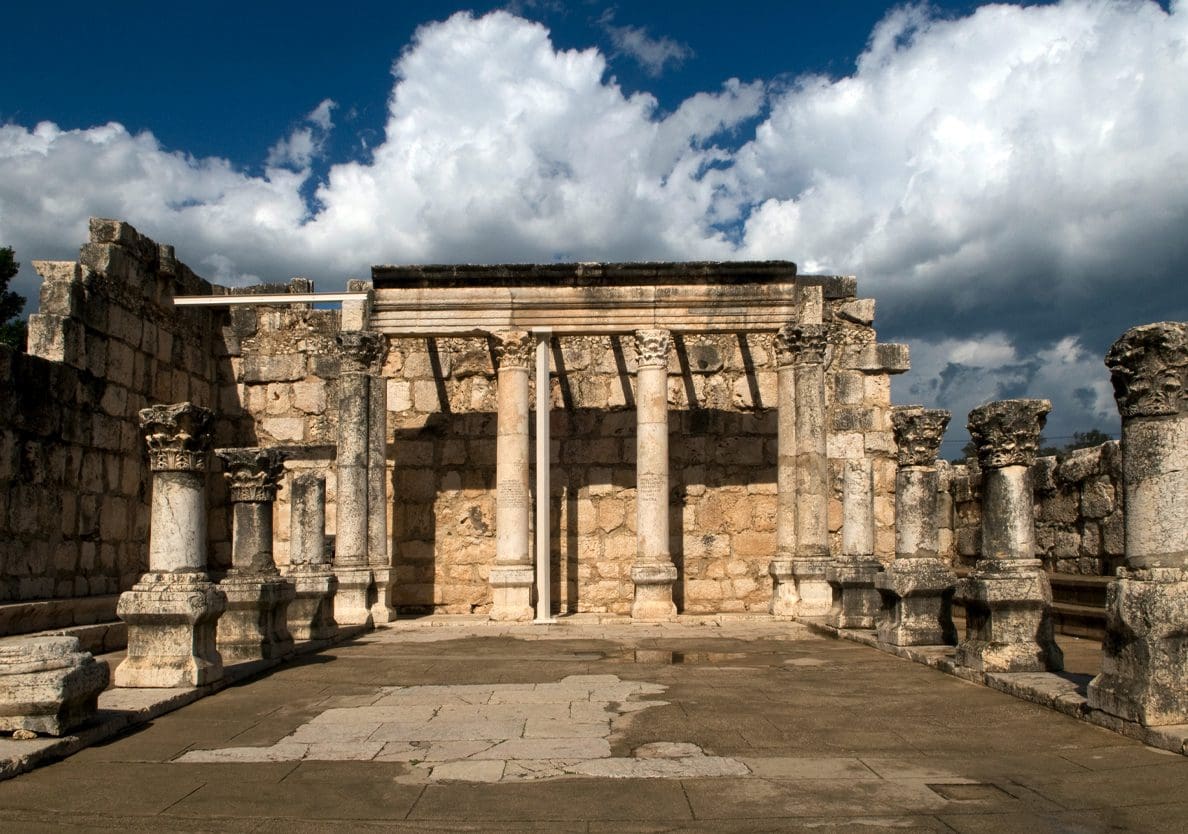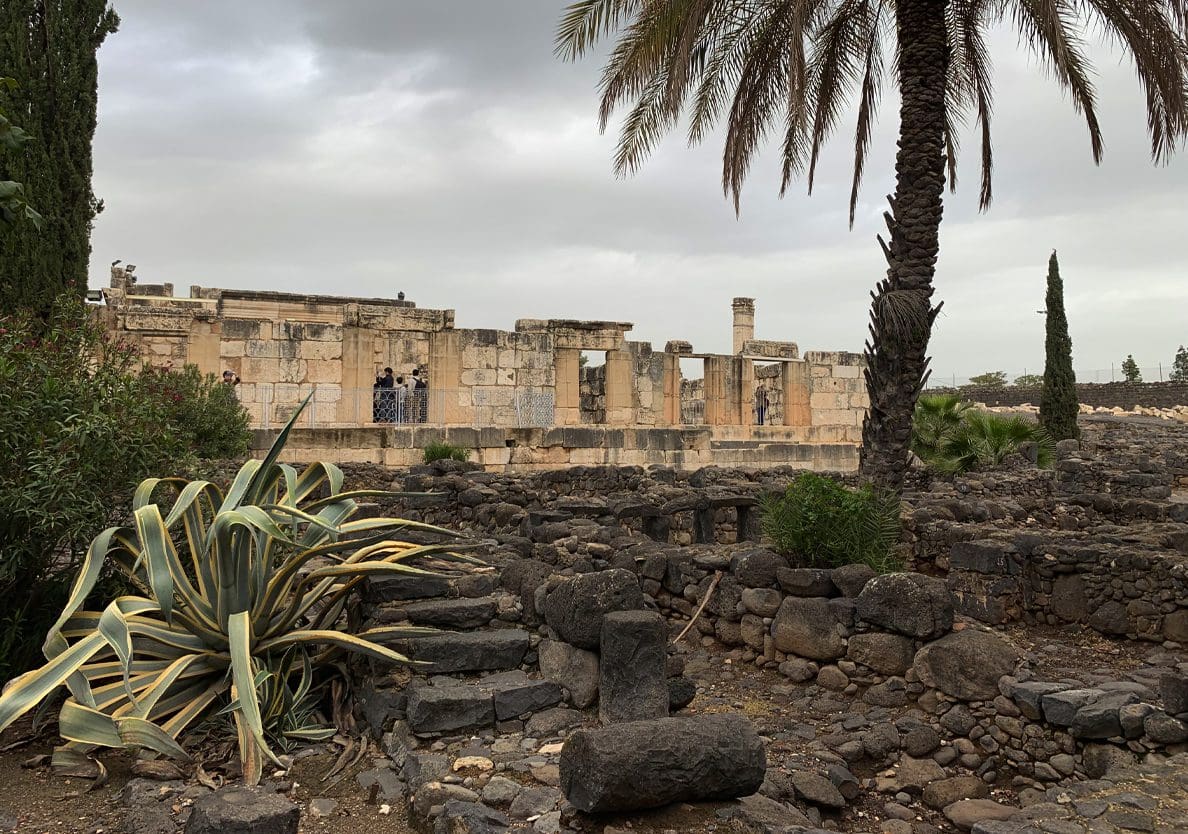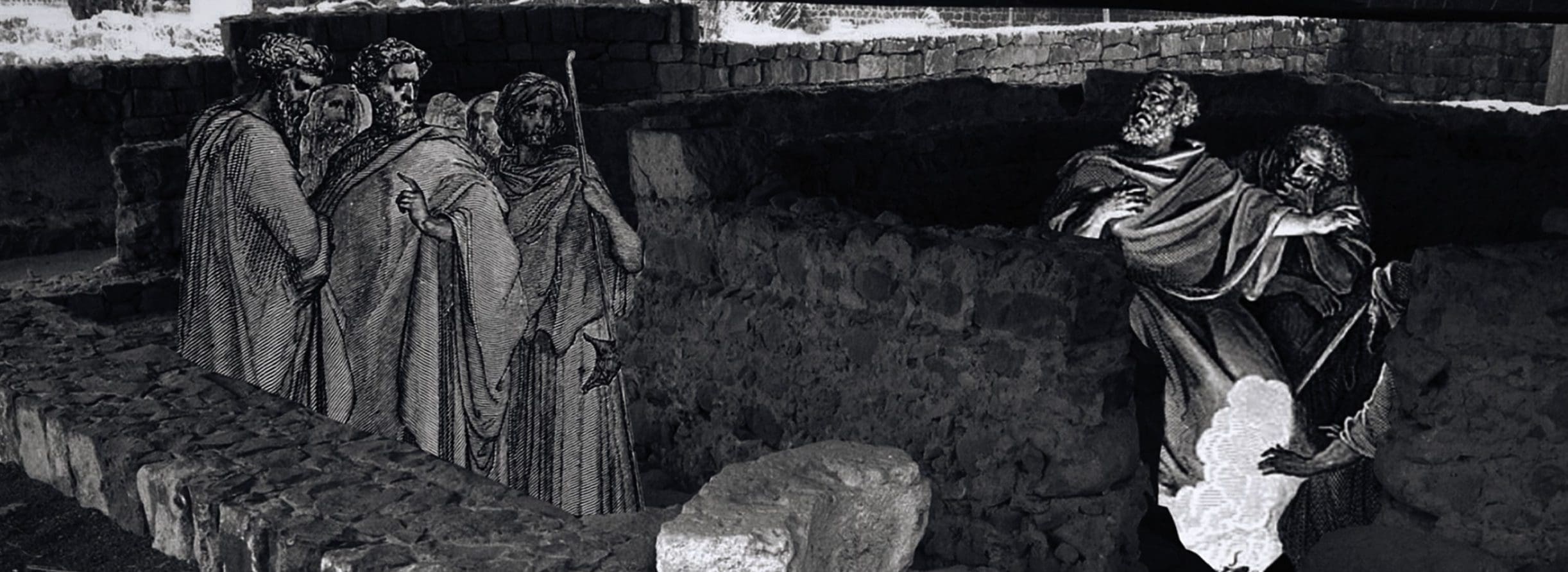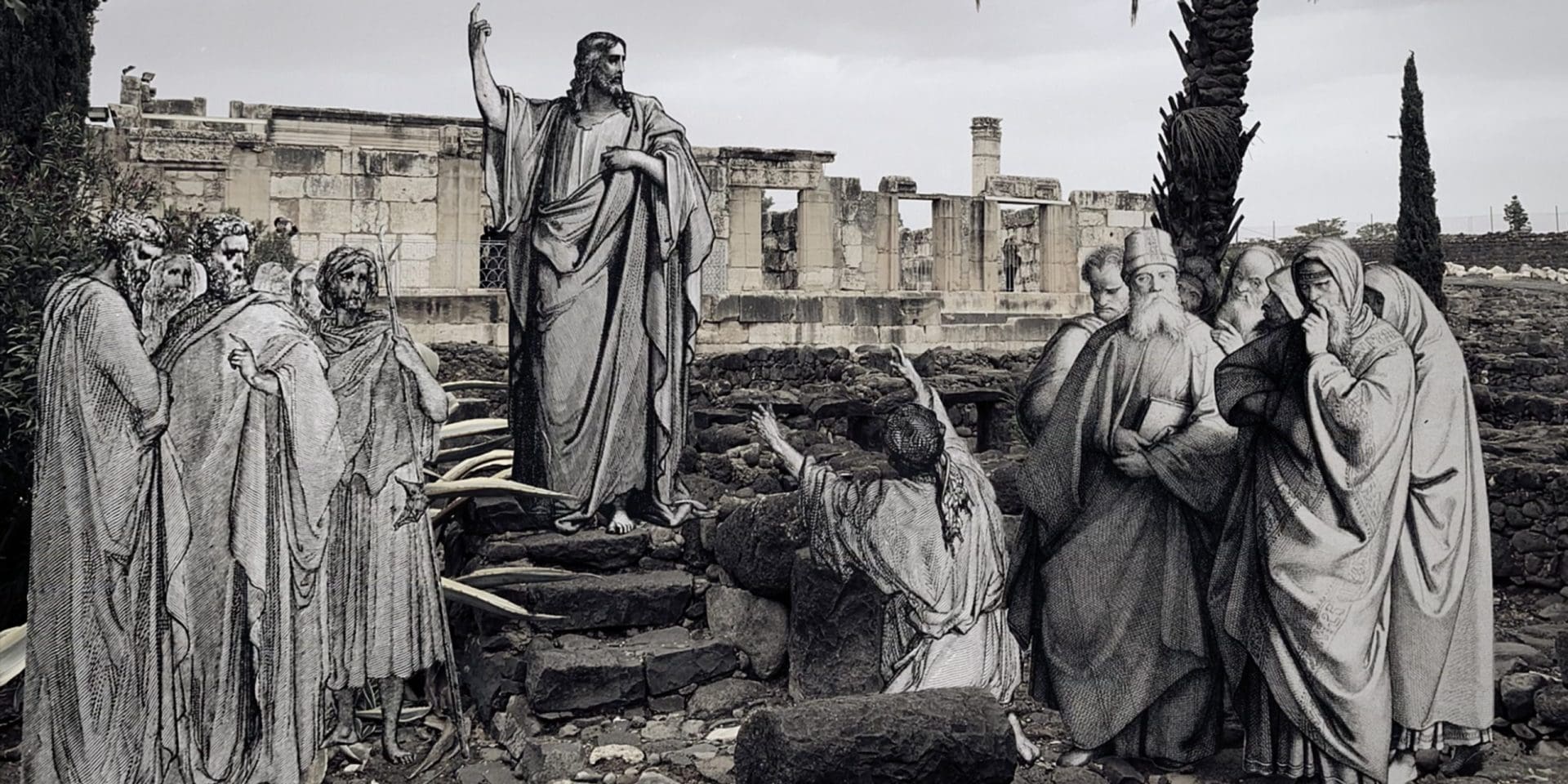The village of Capernaum located on the Northwestern shore of the sea of Galilee, was a centre of the ministry of Jesus Christ. It appears several times in the New Testament Gospels as Jesus’ home base, where he apparently stayed in the family home of Peter (Matt. 4; Mk. 10). Here in Capernaum Jesus interacted with a Roman Centurion (Lk. 7; Matt. 8; Jn. 4) and he routinely taught in Capernaum’s synagogue (Mk. 1; Jn. 6) where he healed at least one man (Mk. 3). Today, the site of ancient Capernaum has been identified and largely excavated after nearly 1,000 years of lying in the dust.
After the life of Christ, Capernaum continued to be a successful fishing and trading town, but now with added religious significance. It became a place of Christian pilgrimage, boasted a large and beautiful Jewish synagogue, and housed a Roman population as well. Capernaum survived two major earthquakes in antiquity that required massive rebuilding projects (4th century, 7th century), but after a final large earthquake in the 11th Century it was abandoned.


As we know it today, Capernaum was properly identified in 1866 by archaeologist Charles Wilson. The Western part of the site was purchased in 1894 by the Franciscan Custody of the Holy Land. To protect the site from the looting that had been going on, the Franciscan Fathers reburied parts of the site and built a tall stone protective wall; excavations began in 1905. The Greek Orthodox Church of Jerusalem bought the Northeastern section of ancient Capernaum and conducted excavations on their side beginning in the late 1970’s.
Capernaum’s most spectacular finds are on the Franciscan side: A fourth century limestone synagogue, and a church that is believed to have been built over the remains of Peter’s house. The synagogue was excavated and reconstructed in the 1920’s, it was originally built on a platform to make it the tallest point in the village. Its age was confirmed when the floor was removed, and trenches were excavated. They revealed a first century structure underneath, built with local volcanic stone (Basalt) typical of the rest of the village’s homes and buildings. This is believed to have been the synagogue in which Jesus preached. In the fill layer between the floor of the old synagogue and the floor of the newer synagogue, pieces of pillars, grey granite pillar bases, and decorative moldings were found. These are believed to have once adorned the original 1st century synagogue.

The next exciting structure is an octagonal church believed to have been built over the house of Peter. Churches built in this shape were meant to commemorate specific events in Christian history and are known elsewhere in ancient Israel (ex. Bethlehem – the Church of the Nativity). Underneath this octagonal church was an earlier church with various Christian graffiti carved into its plaster covered walls. This church was a renovated first century BC home. It was built of rough local stones (basalt) with worked thresholds and door jams, and cobble stone paved floors. Like the other homes in Capernaum, it was a 1 story home and would have had roof made of wood, straw, and earth. This home was slightly bigger than the average Capernaum home and was oriented around 2 open air courtyards; in one, the family’s oven was excavated. Sometime in the mid – late 1st cent. AD the largest room in the house was plastered, this has been taken by researchers as perhaps the earliest evidence of Christians gathering to worship.

Corie Bobechko is a daily co-host, speaker, and writer of Bible Discovery. She also hosts a YouTube channel that shows how history and archaeology prove the Bible. Her heart for seekers and skeptics has led her to seek truth and share it with others. Corie also has a Bachelor of Theology from Canada Christian College.
• James F. Strange, Hershel Shanks, “Has the House Where Jesus Stayed in Capernaum Been Found? Italian archaeologists believe they have uncovered St. Peter’s home”. Biblical Archaeology Society Online Archive. Biblical Archaeology Review 8:6, November/December 1982.
https://www.baslibrary.org/biblical-archaeology-review/8/6/4
• James F. Strange, Hershel Shanks, “Synagogue Where Jesus Preached Found at Capernaum”. Biblical Archaeology Society Online Archive. Biblical Archaeology Review 9:6, November/December 1983
https://www.baslibrary.org/biblical-archaeology-review/9/6/1
• John C. H. Laughlin, “Capernaum: From Jesus’ Time and After”. Biblical Archaeology Society Online Archive. Biblical Archaeology Review 19:5, September/October 1993
https://www.baslibrary.org/biblical-archaeology-review/19/5/10






